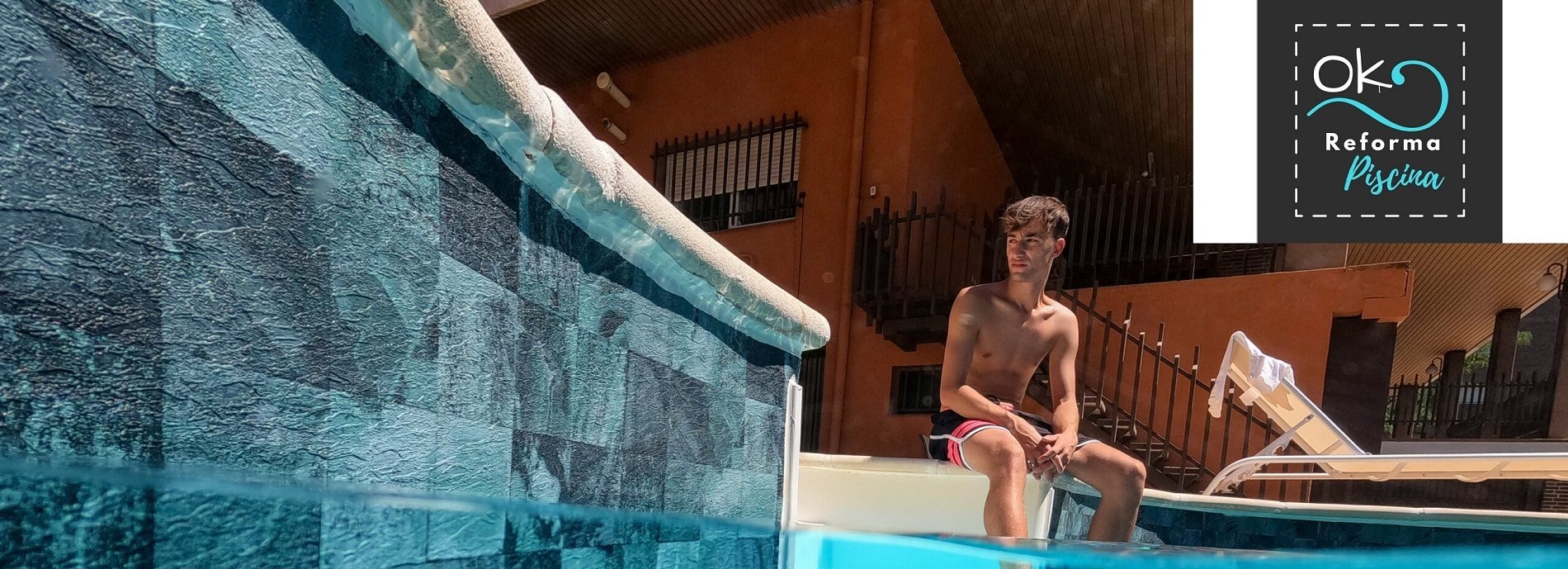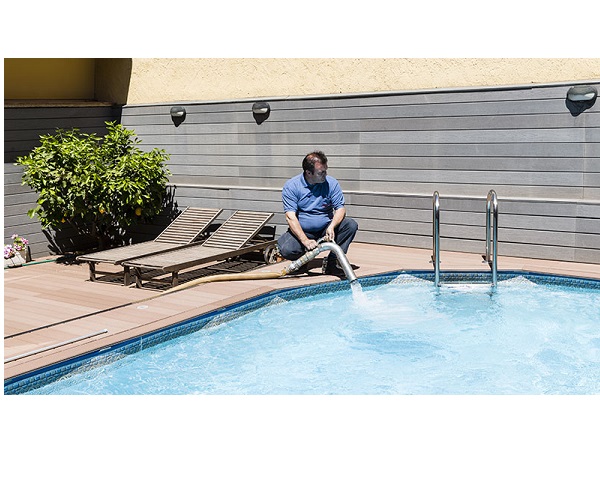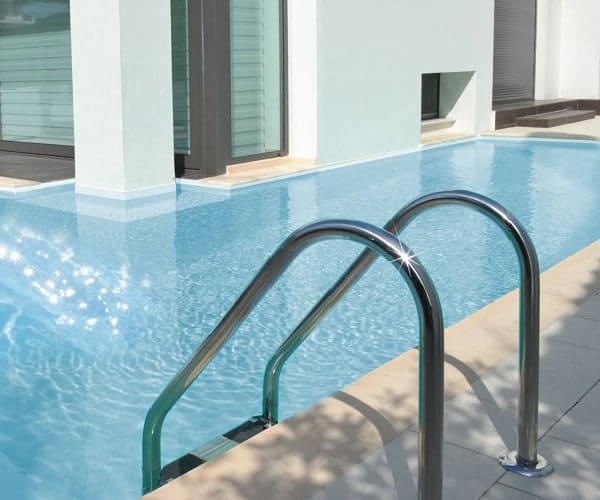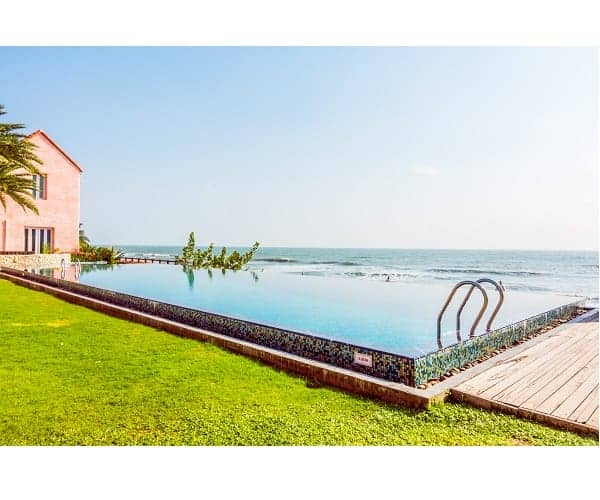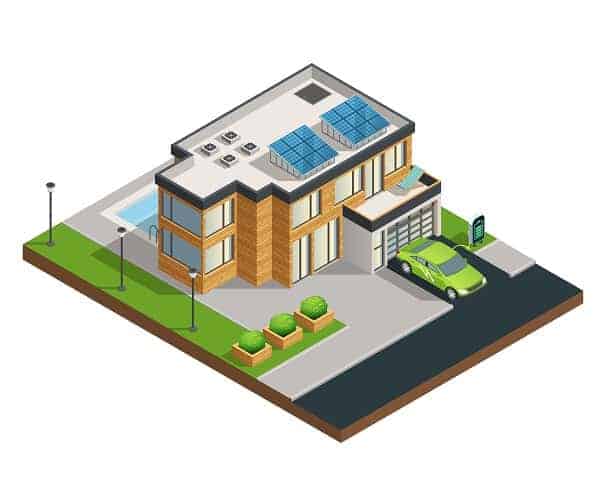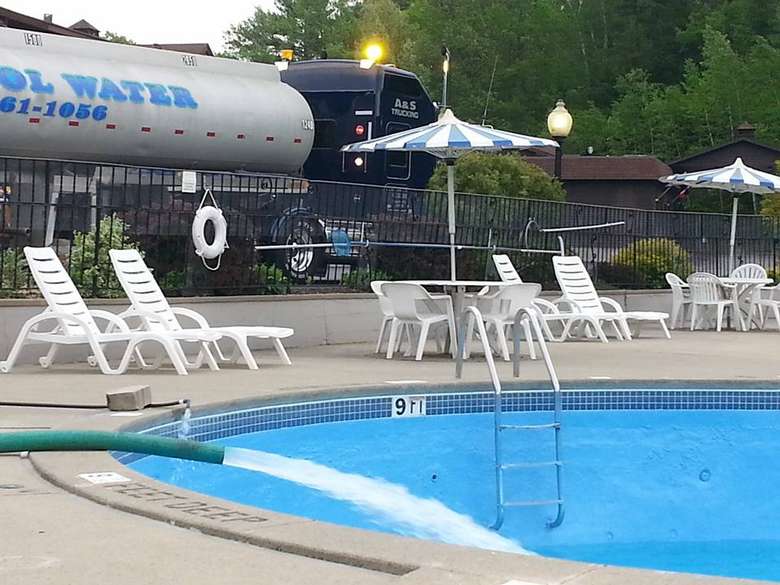
Table of contents of the page
To begin, mention that on this page we Ok Pool Reform and within those that are matters of Consumption in the pool, We want to address a topic that worries many pool owners and it is about: What to do after filling the pool water
Ways to fill a pool
There are many ways to fill a pool, but if you want the water to be of the best quality possible, then you should follow these steps.
1. First of all, make sure that the area where you are going to fill the pool is completely clean. This means that you should remove all dirt, dust, and leaves that may have fallen on it. If you do not clean the area before filling it, it is very likely that these elements will contaminate the water.
2. Next, fill the pool with tap water. Do not use any other type of water, as this could damage the pool glass. When you have finished filling, check the water level and adjust if necessary.
3. Now, it's time to add the necessary chemicals to keep the water clean and healthy. There are a wide variety of chemicals available on the market, so be sure to follow the manufacturer's instructions closely.
4. Finally, turn on the filter and let it run for a few hours. This will help remove any impurities that may be left in the water.
Once you have followed these steps, you will have a pool full of crystal clear water of the best quality possible. So what are you waiting for? Start filling it right now.
How to do the (first) filling?

Assuming you have a rectangular pool, the first thing you need to do is Calculate the volume of water your pool can hold. To do this, you will need to measure the length, width, and depth of your pool. Once you have these measurements, you can multiply them to get the total volume.
For example, if your pool is 10 feet long, 5 feet wide, and 2 feet deep, the total volume would be 100 cubic feet.
Once you know the total volume of your pool, you can begin filling it with water. The best way to do this is to use a hose. Connect the hose to a water source and turn it on. Depending on the size of your pool, it may take some time to fill it.
The first filling of the pool must be done carefully to avoid damaging the pool liner.
Water should be added slowly to the pool, using a hose with a shut-off valve. A garden hose can be used, but it is important to make sure the water pressure is not too high. Once the pool has begun to fill to the desired level, the pump and filter are opened and allowed to run for 24 hours before swimming.
What to do after filling the pool water

Once the pool is full of water, it is important to circulate and balance the chemicals in the water. Chlorine or other disinfectants to keep the water clean. Balancing pH levels and other chemical concentrations is essential for safe bathing. Adding algae preventatives and stain removers can also help maintain the pool's appearance. It is important to test the water regularly and adjust chemical concentrations as necessary. Depending on use, it may also be necessary to add algaecide or other chemicals every few weeks. Additionally, it is necessary to regularly clean debris and dirt from the pool with a vacuum cleaner or brush. Proper maintenance will ensure that your pool remains clean, safe and attractive for years to come.
Guides for pool maintenance after filling
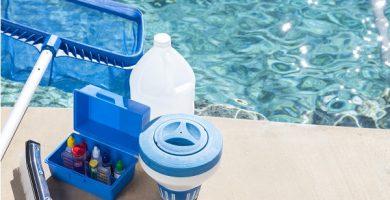
Useful guide to know how to clean the pool

Guide to maintaining a pool with water in perfect condition
Interventions after filling the pool with water

After filling the pool with water, it is important to treat and disinfect the water to keep it clean and safe. Here is a step-by-step guide to do it:
1. Turn on the pool filter and pump system.
Let the water circulate for 24 hours before swimming.
2. Add a clarifying agent to the water.
This product will help remove suspended particles that make the water look cloudy.
Pool clarifier price
Ultra-concentrated Clarifying Flovil blister of 9 tablets
Astralpool, Solid Flocculant/Clarifier in Sachets – 8 bags of 125GBayrol – Concentrated Clarifier 0.5 L Bayrol
3. Add an algaecide to the pool.
This product will help prevent and control algae in the water.
Buy preventive pool algaecide
[amazon box=»B07F9RTSQV»]
4- Apply pool antiphosphate
On the other hand, pool antiphosphate is a natural product that can reduce the levels of phosphates in your pool. –
Buy pool antiphosphate
5- Add a pool disinfectant.
Once the pool is full, you can add any chemicals or treatments you need. Be sure to follow the directions on the labels of these products.
After adding any chemicals or treatments, you should let the water circulate for a few hours before using the pool. This will help ensure that the chemicals are evenly distributed in the water.
Now that your pool is filled and ready to use, you can enjoy it all summer long! Thanks for reading and happy swimming!
This will kill any bacteria in the water and keep the water clean and safe for swimming.
6. Check the pH of the pool
Pool water should be kept between 7,2 and 7,6 to be safe for swimming.
7- Check all the parameters of the pool water values and adjust them if necessary
That's it! Your pool will be ready for swimming as soon as the water levels have adjusted.
- Finally, keep the pool filter and pump system running to keep the water clean and safe for swimming.
- Likewise, if you have any questions, you can consult our pool maintenance and care blog with all the actions and care.
